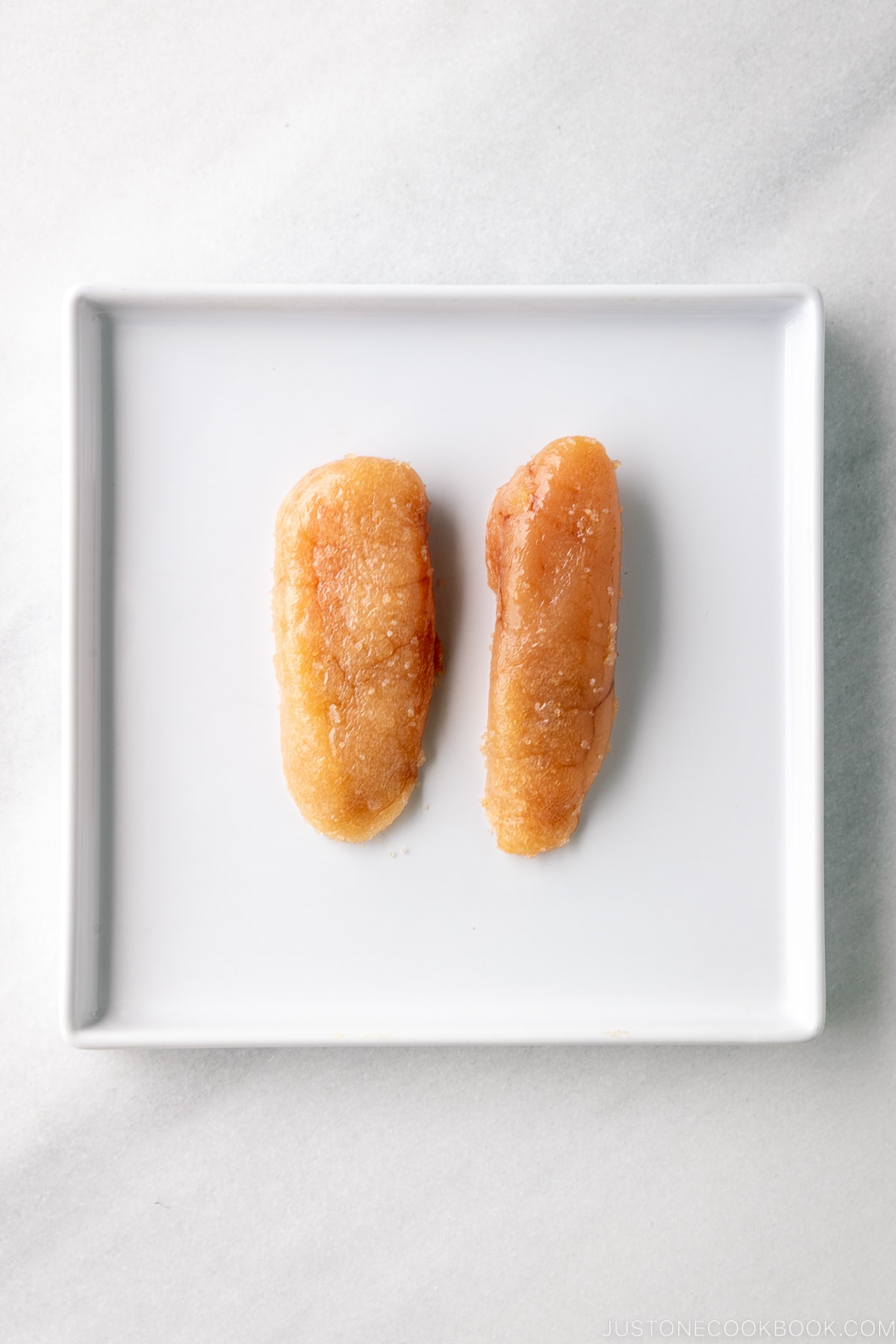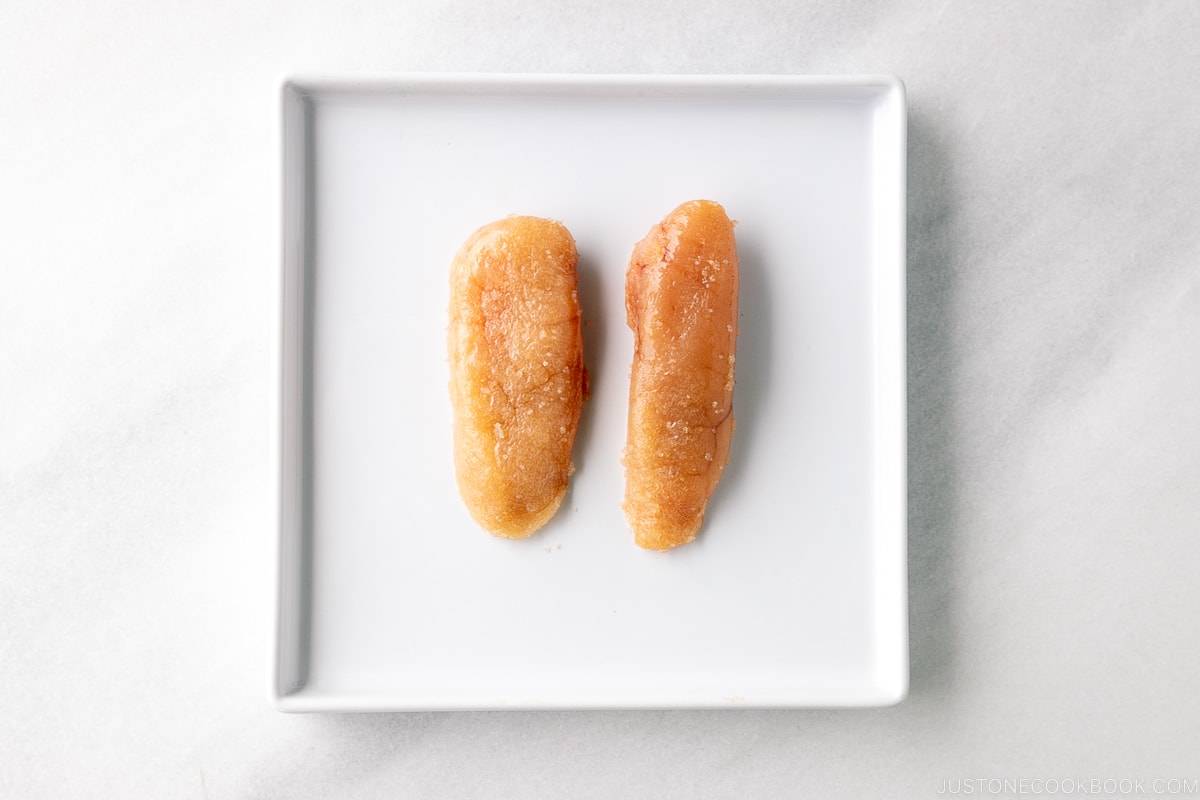Tarako is a salt-cured sac membrane of Alaskan/walleye pollock. The Japanese eat this delicacy raw, with rice, or in pasta sauce.

Tarako (鱈子・たらこ) is a whole fish egg (roe) sack of Alaskan/walleye pollack (a member of the cod family) cured with salt. It’s a Japanese dish that’s a specialty from Fukuoka prefecture.
What Is Tarako
Tarako is a seafood product consisting of salted cod roe. The Japanese word “tarako” consists of tara (鱈) cod and ko (子) child/ren, hence its translation “children of cod.” Beige-pink in color, it’s a popular accompaniment to rice, tossed in a dashi-cream sauce for tarako pasta, or stuffed in onigiri. You can find it sold in the sac, chopped pieces, or jars with the soft membrane removed.
It’s made by salt-curing fresh roe for half a day, washing off the salt, pat drying excess moisture, then letting it mature for a few days.
Tarako originated from Korea and was imported to northern Kyushu and Yamaguchi in the 17th century. It’s called myeongnan-jeot in Korean.
The red chili pepper version is karashi mentaiko. It has a spicy kick as it is brined and marinated in chili flakes.
What Does It Taste Like
It has a salty umami flavor with soft eggs that don’t pop like tobiko.

How To Use
Eat it raw, cooked, or grilled. It’s great simply with a bowl of rice. Mix it with Japanese mayo for dips and spreads on baguettes and Japanese-style pizza.
Recipes Using Tarako
- Ochazuke (Green Tea Over Rice) お茶漬け
- Onigiri (Japanese Rice Balls) おにぎり
- Classic Mentaiko Pasta 明太子パスタ
Where To Buy
You can find it in the refrigerator and freezer sections at Asian, Korean, and Japanese supermarkets. It can be expensive outside of Japan as it’s a raw and imported food product, but a little goes a long way.
How To Store
Use quickly within the expiration date as it is a raw food product. You can freeze it by wrapping the whole sac in plastic wrap, then in a plastic bag with the air pressed out. Consume within two weeks.
Wish to learn more about Japanese cooking? Sign up for our free newsletter to receive cooking tips & recipe updates! And stay in touch with me on Facebook, Pinterest, YouTube, and Instagram.









